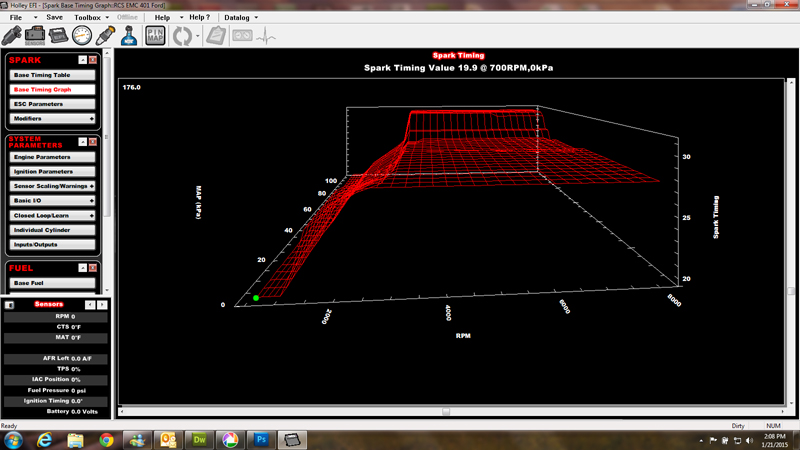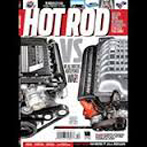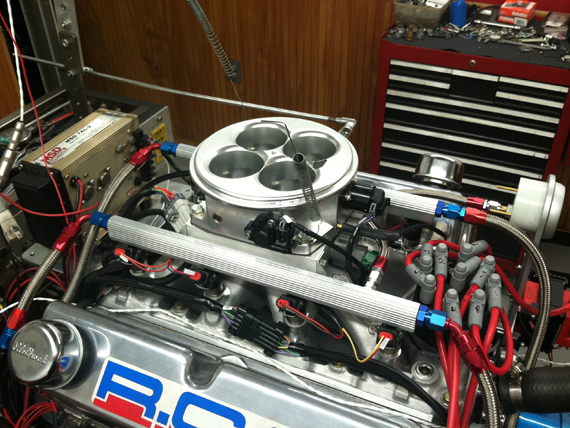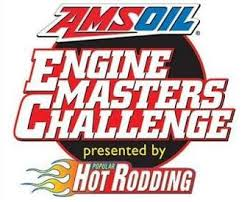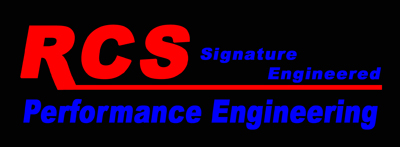
TUNING EFI
Tuning EFI Systems
RCS offers EFI tuning for all the aftermarket ECU's on the market. Tuning sessions can happen both in the car and or on our engine dyno. When a customer purchases a complete EFI engine from RCS or an EFI upgrade all our ECU Maps are calibrated to the engines demands for fuel, ignition timing, idle speeds, throttle response and acceleration enrichment tuning. In addition engine safety parameters are also set, each engine has a different tune and operating status therefore different safety parameters.
EFI Drivability Issues
With vehicles requiring drivability tuning issues, we actually have to drive the car while tuning the observed engine tuning issues that cannot be experienced on an engine dyno or in the shop, such as light engine loads and small throttle position changes in hard to drive conditions. Parking, traffic, cruising speeds, deceleration and fuel economy consist of the harder areas to tune. This requires one to two people in a vehicle, with a one person tuning session improvements are made that don't require continuous driving, driving then pulling over to make those adjustments, while with two people the improvements are made by the passenger (tuner) and information can be passed to the tuner from the driver. In this case this type of tuning is mostly needed when the engine has a large cam duration and or cam overlap or a large throttle body with large volume intake runners for a given induction air speed rate. The sudden change in throttle position changes the manifold vacuum (speed) and the air speed rate drastically therefore requiring a huge enrichment of fuel all at once, off idle throttle position changes are typically a problem area with these types of engine combinations. Tuning the acceleration enrichment or (pump shot) rate is not the area that needs corrected in this circumstance, it's in the Base Fuel Map.
Above is an example when using a high Hp engine for driving on the street. Large throttle bodies although required at times, are mostly for engines needing added breathing ability in the mid-range to upper part of the rpm band, these large throttle bodies can create a tuning issue with large duration and overlap camshafts with larger cross sectional area ports. This type of tuning issue normally shows up at low engine speeds 1,200 to 2,500 with high engine loads.
This particular engine is a 401 Ford and has a 2,000cfm throttle body using an EFI conversion carburetor style (centered) intake manifold. The use of a 4 blade throttle body creates more air speed than say a one or two blade throttle body that flow the same 2,000 cfm value. Fortunately this engine does not have this type of tuning problem I just explained, it's an example for engines that can. This engine has a much smaller duration camshaft, with smaller cross sectional area intake ports, which support a very high air speed intake port and flow rates. The smaller camshaft duration lessens the reversion in the intake track therefore intake air speed is higher at lower rpms. This engine was designed for the intent to be driven on the street making over 700Hp. The larger 2,000 cfm throttle body helps with drivability by softening the throttles sensitivity making the engine easier to drive.
Below is a fuel graph that is a good example of an engine requiring a lot of added fuel in this precise area. If you are experiencing this type of tuning issues were when you go for the throttle and the engine hesitates, misfires and or backfires through the throttle at lower engines speeds and under high loads, then look closely at the graph below.
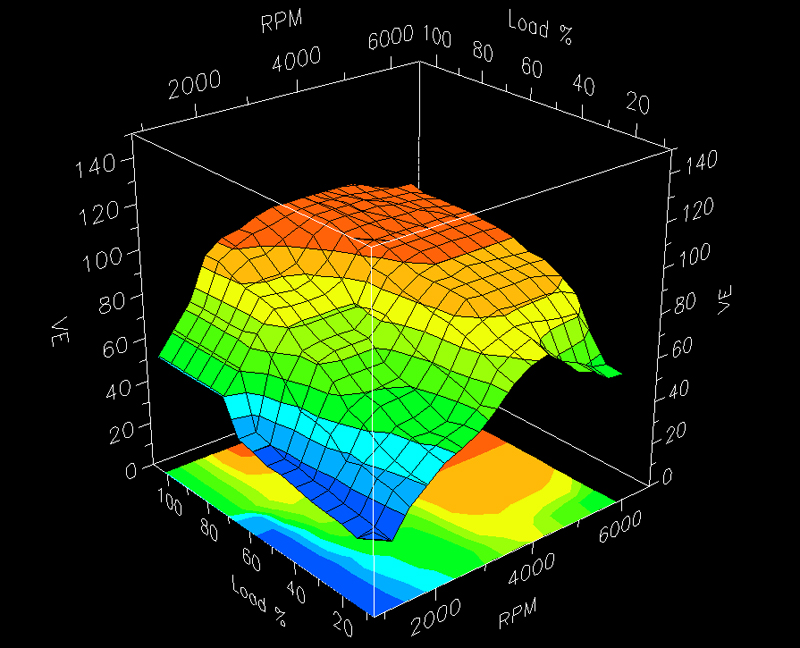
Above is a FAST SYSTEM Fuel Map and it's a prime example of an engine needing a lot of fuel right away off idle. This Fuel Map is for a modestly built 383 Chevy engine making 460Hp @ 5,600 and 520lbs @ 4,000. The car weighs about 3,600lbs and has a 6 speed manual transmission with a 3.73 rear axle. It also has a slightly larger port cross sectional in the intake runners and we used a small duration 232* degrees @ .050 camshaft. Although the total intake runner length is 21" long, this doesn't help with the air speed until later in the rpm band building peak VE to 124% @4,000. As I stated as soon as the throttle opens under load at low rpm, say pulling out at a stop sign you can see from the graph this engine demands a lot more fuel to feed its hungry appetite. Although a great engine that develops great torque a sum of 520lbs for its size in a street engine, tuning issues like this can show up and create a bit of a problem for the novice tuner. The above map is read VE vs. Load vs. RPM.
Another example in tuning is when a person installs a EFI manifold system that lets say has over 500hp capacity and it is installed on an engine that is only designed to create 300hp. This new EFI system although cool looking has exceptionally large runners, plenum and throttle body and because of that the air speed through this type of system will create issues with the throttle blade settings obtaining a correct engine idle speed setting, along with IAC valve operation issues. To add the injector size sold with the unit will be wrong for the lower Hp engine. Not to mention the drivability tuning can be a challenge for the novice tuner.
Below is a good example of a ECU Base Fuel Map Graph of a 790Hp 401 Ford note the smoothness of the graph.
When tuning an EFI for the street there can be as many as 15 fuel related fuel maps that need adjusted to the engines demands and only one ignition map. The Holley Fuel Map below is read in pressure kPa vs. lbs/hr vs. rpms. The smoothness of this type of fuel graph comes from a much longer engine power band were we designed the engines peak power to be at a higher RPM 7,600.
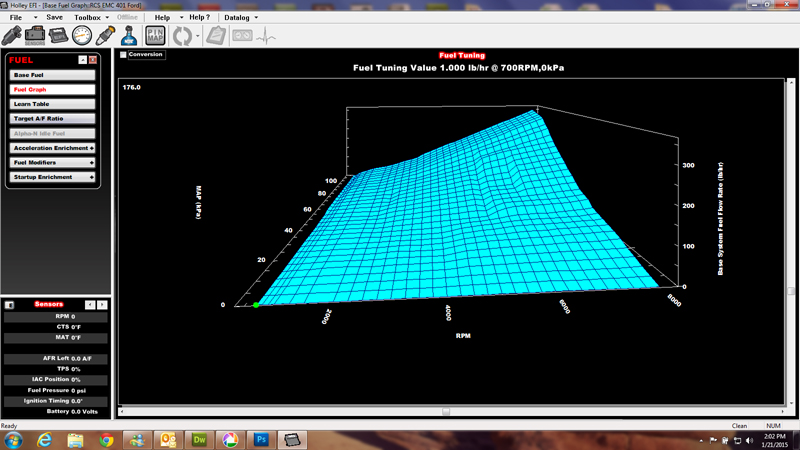
Below is a Ignition Map Graph of the same engine above.
